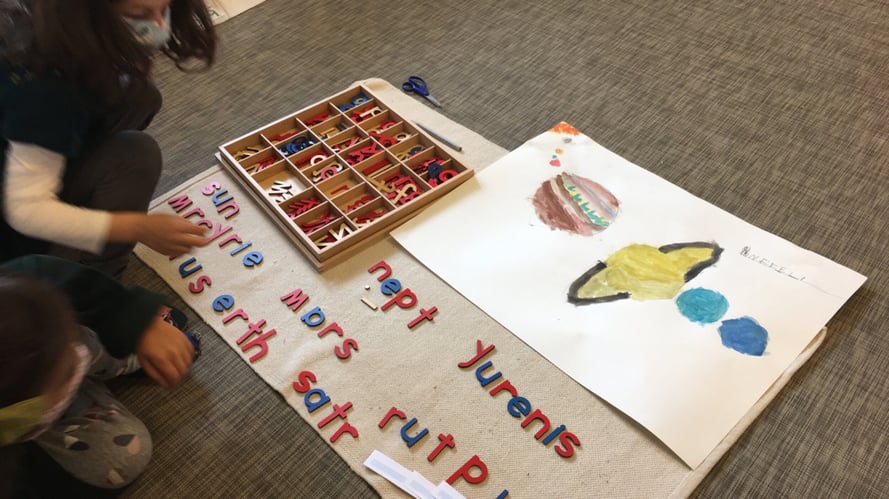
As part of our study of the solar system in the Acton Montessori studio, children learned about Curiosity, the rover that NASA sent to Mars in 2011 to get information about the red planet. “Curiosity” was a new word for many of the learners, and guides discussed with them that it means to wonder and want to know more about something. Then learners shared things that they were curious about. “I’m curious about why an asteroid hit the Earth,” said one learner. “I’m curious about why Mars is red,” said another.
What role does curiosity play in the Montessori studio? The Montessori environment is designed to appeal to children’s natural curiosity. The way materials are displayed on the shelves is meant to draw children’s attention, and learners have the freedom to explore the materials that interest them. Learners see other children working with materials, and this piques their curiosity as well.
Having a safe learning environment where mistakes are opportunities for learning is also important for supporting curiosity. In the studio, it’s okay not to know the answer. An acceptance of our own lack of understanding is a prerequisite for curiosity. In the studio, we emphasize that it is okay and normal not to know something yet, or know how to do something yet, because we are all still learning. We like to say in the studio, “Even though I know so much, I’m so glad that there are so many things I still don’t know! I get to discover even more!”
Later in the week, one learner asked, “How did the universe start to exist?” As guides, we model openness, share when we don’t know something, and think aloud about how we could get the information we are looking for. In this instance, after the guide shared that this was something that she would need to research more in a book or ask a scientist about, a learner exclaimed, “You are curious about it!” The guide asked the group to tap their knees if they, too, were curious. There was a lot of tapping!